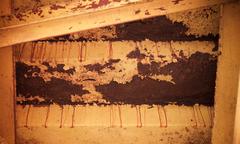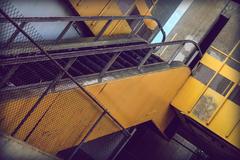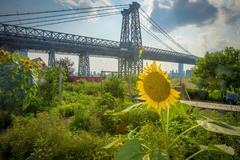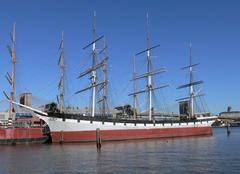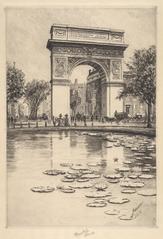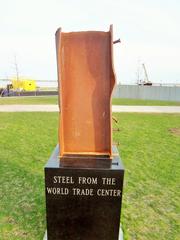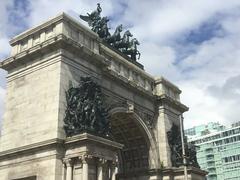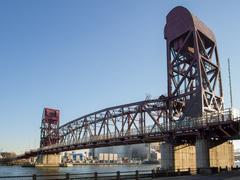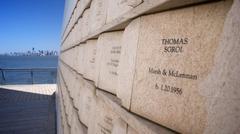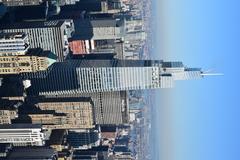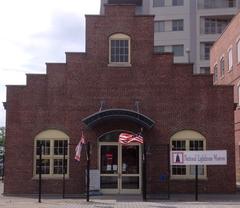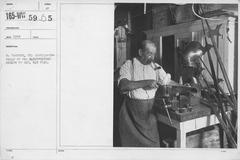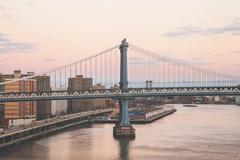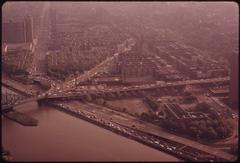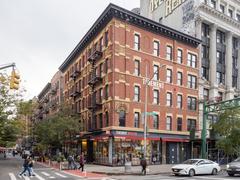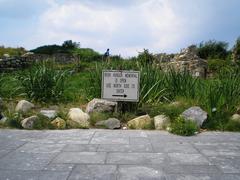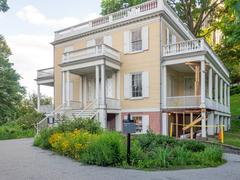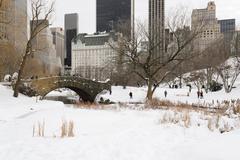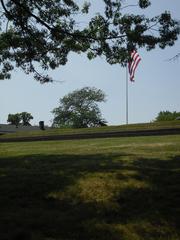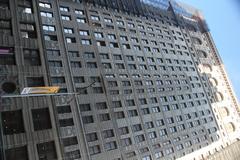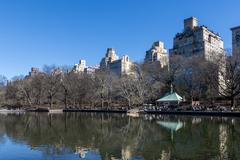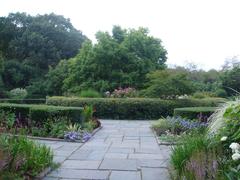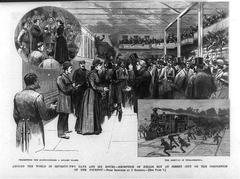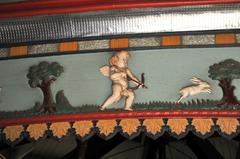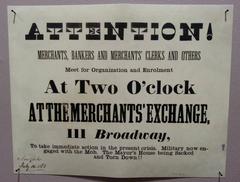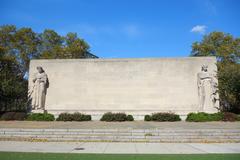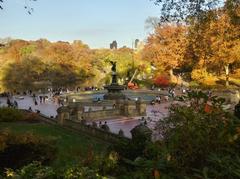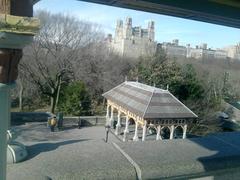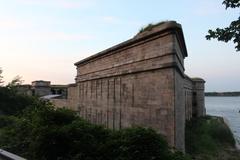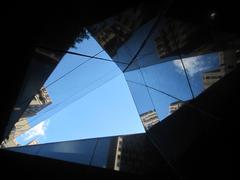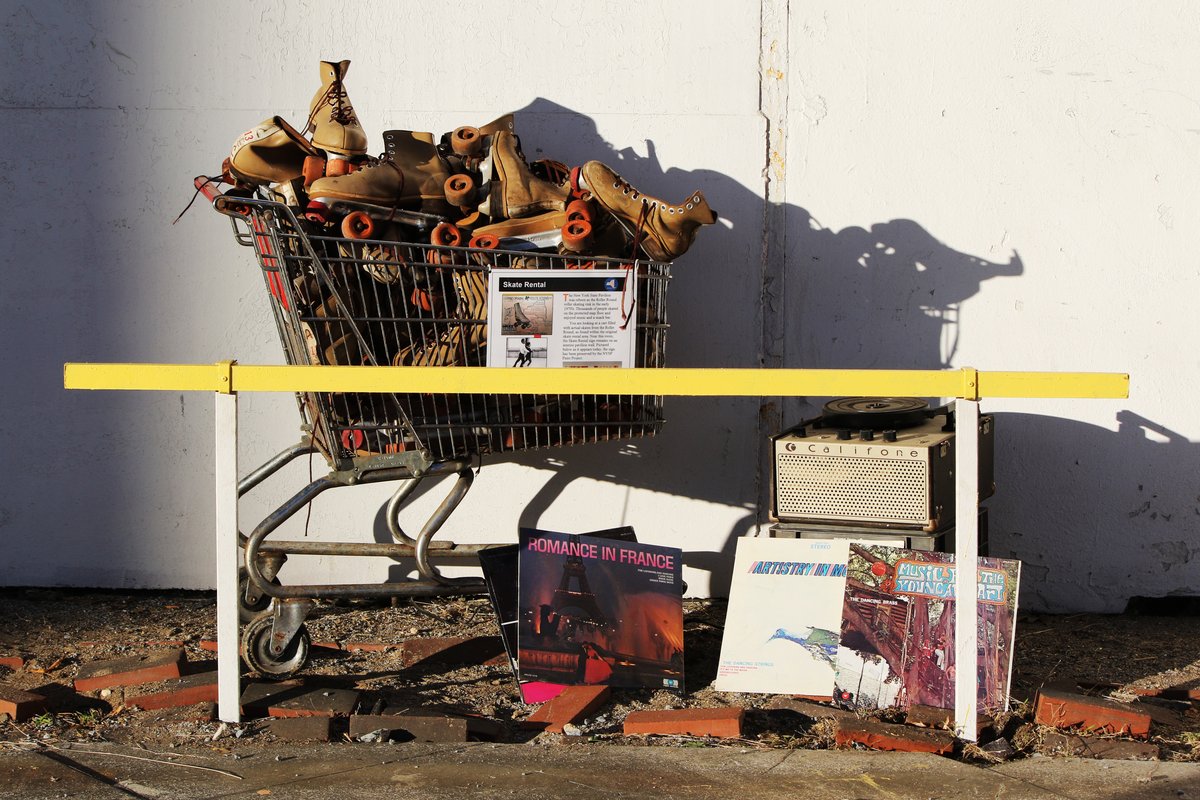
Comprehensive Guide to Visiting the New York State Pavilion, New York City, United States
Date: 01/08/2024
Introduction
The New York State Pavilion, an enduring symbol of New York City’s architectural and cultural heritage, is nestled within the expansive Flushing Meadows Corona Park in Queens. Originally constructed for the 1964-65 World’s Fair, this iconic structure was designed by the eminent architect Philip Johnson. The Pavilion comprises three main components: the Tent of Tomorrow, the Observation Towers, and the Theaterama, each reflecting the futuristic vision and architectural innovation of the 1960s.
The Pavilion’s historical significance is deeply rooted in its role as a showcase of New York State’s achievements and aspirations during the World’s Fair. Over the years, it has faced numerous challenges, including periods of neglect and structural deterioration. However, dedicated preservation efforts, particularly those initiated in the early 21st century, have revitalized this landmark, ensuring its continued relevance and appeal (source).
Today, the New York State Pavilion stands not only as a relic of the past but also as a beacon for future generations. Its recent restoration projects have highlighted its architectural splendor, drawing visitors from around the world. This comprehensive guide aims to provide detailed information on the Pavilion’s visiting hours, ticketing, historical background, and significance, offering valuable insights for anyone planning a visit to this remarkable site.
Table of Contents
- Introduction
- Historical Background of the New York State Pavilion
- Visitor Information
- Significance and Legacy
- Visitor Experience
- Frequently Asked Questions (FAQ)
- Conclusion
Historical Background of the New York State Pavilion
Origins and Construction
The New York State Pavilion was constructed to showcase the achievements and future aspirations of New York State at the 1964-65 World’s Fair. The Pavilion consists of three main components: the Tent of Tomorrow, the Observation Towers, and the Theaterama.
The Tent of Tomorrow, a massive elliptical structure, featured a colorful terrazzo map of New York State on its floor, which was the largest of its kind at the time. The Observation Towers, standing at heights of 60, 150, and 226 feet, provided visitors with panoramic views of the fairgrounds and the surrounding cityscape. The Theaterama, a circular theater, showcased various multimedia presentations and art installations.
Post-World’s Fair Usage
After the World’s Fair concluded, the New York State Pavilion was transferred to the New York City Department of Parks and Recreation. Despite its initial grandeur, the Pavilion struggled to find a long-term purpose. It was briefly used as a roller skating rink and a concert venue, hosting performances by legendary bands such as Led Zeppelin, Santana, and Ten Years After. However, these uses were short-lived, and the Pavilion eventually fell into disrepair.
Preservation Efforts
In the decades following the World’s Fair, the New York State Pavilion faced numerous challenges, including structural deterioration and vandalism. By the early 2000s, the Pavilion was in a state of severe neglect, with its once-vibrant colors faded and its structures in need of significant repairs. The estimated cost of demolishing the Pavilion was around $14 million, but local officials and preservationists advocated for its restoration instead.
In 2014, Queens Borough President Melinda Katz made the restoration of the Pavilion a top priority. The first major step in the restoration process was undertaken by the New York Structural Steel Painting Contractors Association, which restored the crown of the Pavilion to its original “American cheese” yellow color. This $3.25 million project was completed at no cost to the city.
Recent Restoration Project
In 2019, a comprehensive $24 million restoration project for the New York State Pavilion began, aimed at stabilizing and preserving the iconic structures. The project included the replacement of deteriorated suspension cables, repairs to spalling concrete at the observation towers, and the installation of new architectural lighting for the towers and the Tent of Tomorrow. The restoration also involved a full electrical upgrade, replacing conduits installed in the 1960s and adding new waterproofing to protect the electrical system.
The restoration project was recognized with the prestigious Lucy G. Moses Preservation Award in 2023, awarded by the New York Landmarks Conservancy. This award honors individuals, organizations, and building owners for their contributions to the city’s preservation efforts. The restoration work is expected to be completed by the summer of 2024, ensuring that the Pavilion remains a symbol of Queens’ architectural heritage for future generations.
Visitor Information
Visiting Hours and Tickets
The New York State Pavilion is open to visitors from 9 AM to 5 PM, Tuesday through Sunday. Admission is free, but visitors are encouraged to reserve tickets in advance, especially during peak tourist seasons. For more information on tickets, visit the official NYC Parks website.
Travel Tips and Accessibility
The Pavilion is easily accessible via public transportation, with several subway and bus lines serving Flushing Meadows Corona Park. The site is wheelchair accessible, with ramps and elevators available for visitors with mobility challenges.
Nearby Attractions
While visiting the New York State Pavilion, take the opportunity to explore other attractions in Flushing Meadows Corona Park, such as the Unisphere, Queens Museum, and the New York Hall of Science. These sites provide additional historical and cultural experiences that complement your visit to the Pavilion.
Significance and Legacy
The New York State Pavilion holds a special place in the history of New York City and the broader architectural community. Designed by Philip Johnson, a leading figure in modern architecture, the Pavilion is a testament to the innovative spirit of the 1960s. Its futuristic design and ambitious scale captured the imagination of millions of visitors during the World’s Fair and continue to inspire architects and preservationists today.
The Pavilion’s restoration is not only a celebration of its historical significance but also a commitment to preserving cultural landmarks for future generations. The efforts to save and restore the Pavilion reflect a broader movement to recognize and protect mid-20th-century architecture, which is often at risk of being overlooked or demolished.
Visitor Experience
With the restoration nearing completion, the New York State Pavilion is set to become a major attraction in Flushing Meadows Corona Park once again. Visitors will be able to explore the Tent of Tomorrow, with its restored terrazzo map, and ascend the observation towers to enjoy breathtaking views of the park and the city beyond. The new architectural lighting will highlight the Pavilion’s unique design, creating a stunning visual experience, especially at night.
The Pavilion’s reopening will also provide opportunities for educational programs and cultural events, further enhancing its role as a community landmark. As a symbol of New York’s past and future, the New York State Pavilion will continue to inspire and captivate visitors from around the world.
Frequently Asked Questions (FAQ)
What are the visiting hours for the New York State Pavilion?
The Pavilion is open from 9 AM to 5 PM, Tuesday through Sunday.
Do I need tickets to visit the New York State Pavilion?
Admission is free, but it is recommended to reserve tickets in advance.
How can I get to the Pavilion?
The Pavilion is accessible via several subway and bus lines that serve Flushing Meadows Corona Park. Check the official NYC Parks website for detailed directions.
Are there any nearby attractions?
Yes, nearby attractions include the Unisphere, Queens Museum, and the New York Hall of Science.
Conclusion
The New York State Pavilion is a testament to the innovative spirit and cultural richness of New York City. Its journey from a World’s Fair marvel to a cherished historical landmark underscores the importance of preservation and the community’s dedication to safeguarding its architectural heritage. The recent restoration efforts have not only restored the Pavilion’s former glory but also enhanced its appeal as a major tourist attraction in Flushing Meadows Corona Park (source).
Visitors to the Pavilion can now experience the grandeur of the Tent of Tomorrow, ascend the Observation Towers for panoramic views, and explore the surrounding attractions within the park. The Pavilion’s reopening promises a rich blend of educational programs, cultural events, and visual splendor, ensuring a memorable experience for all. As you plan your visit, remember to check for the latest updates on visiting hours and events, and consider supporting the ongoing preservation efforts through donations or participation in volunteer programs.
In summary, the New York State Pavilion offers a unique glimpse into the past while serving as a vibrant cultural hub for the present and future. Its enduring legacy as a symbol of architectural innovation and historical significance makes it a must-visit destination for anyone exploring New York City.


